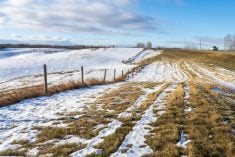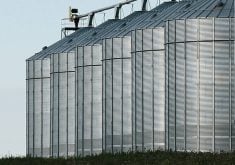Winnipeg — Despite severe storms that have slammed large parts of the Prairies this spring and summer, hail claims from western farmers are trending average to slightly above, according to the Canadian Crop Hail Association.
A storm system that originated in the Rocky Mountain House area of Alberta on July 21 affected communities across the province in a line through to the Lloydminster area. Excessive hail covered the ground in some areas, with reports of baseball-sized stones and severe damage to crops, buildings and vehicles in Lacombe County.
Another severe storm struck the Calgary area on July 22, with hail stones ranging from pea- to golf-ball size, with moderate winds and up to 50 millimetres of precipitation.
Read Also

Federal budget draws mixed reaction from Canadian agriculture groups
The 2025 federal budget took a step forward in recognizing agriculture’s importance but failed to address pressing challenges like labour disruptions, interswitching and precision technology, say Canadian farm groups.
A devastating hail storm hit a number of Saskatchewan communities on July 22, prompting Kerrobert to declare a state of emergency.
Manitoba’s hail claims are just above the five-year average for this time of year, and with a few weeks until harvest is in full swing, potential for a much higher than average hail year remains, a report from the hail association said.
Storms on July 23 and Aug. 2 resulted in widespread crop damage. In both storms, reports of hail damage varied dramatically across fields; from light damage to total loss on the same quarter.
Harvest activities are in their early stages across the Prairies, and are ahead of the average pace in some of the drought-stricken regions of southern Alberta and southwestern Saskatchewan.
Check strips or swaths must be left in hail-affected fields if a crop needs to be harvested before an adjuster arrives.
Heavy rains hampered some inspection efforts during the last week of July. Farmers should check company websites or contact their insurance provider for advice about leaving appropriate check strips, the report advised.














